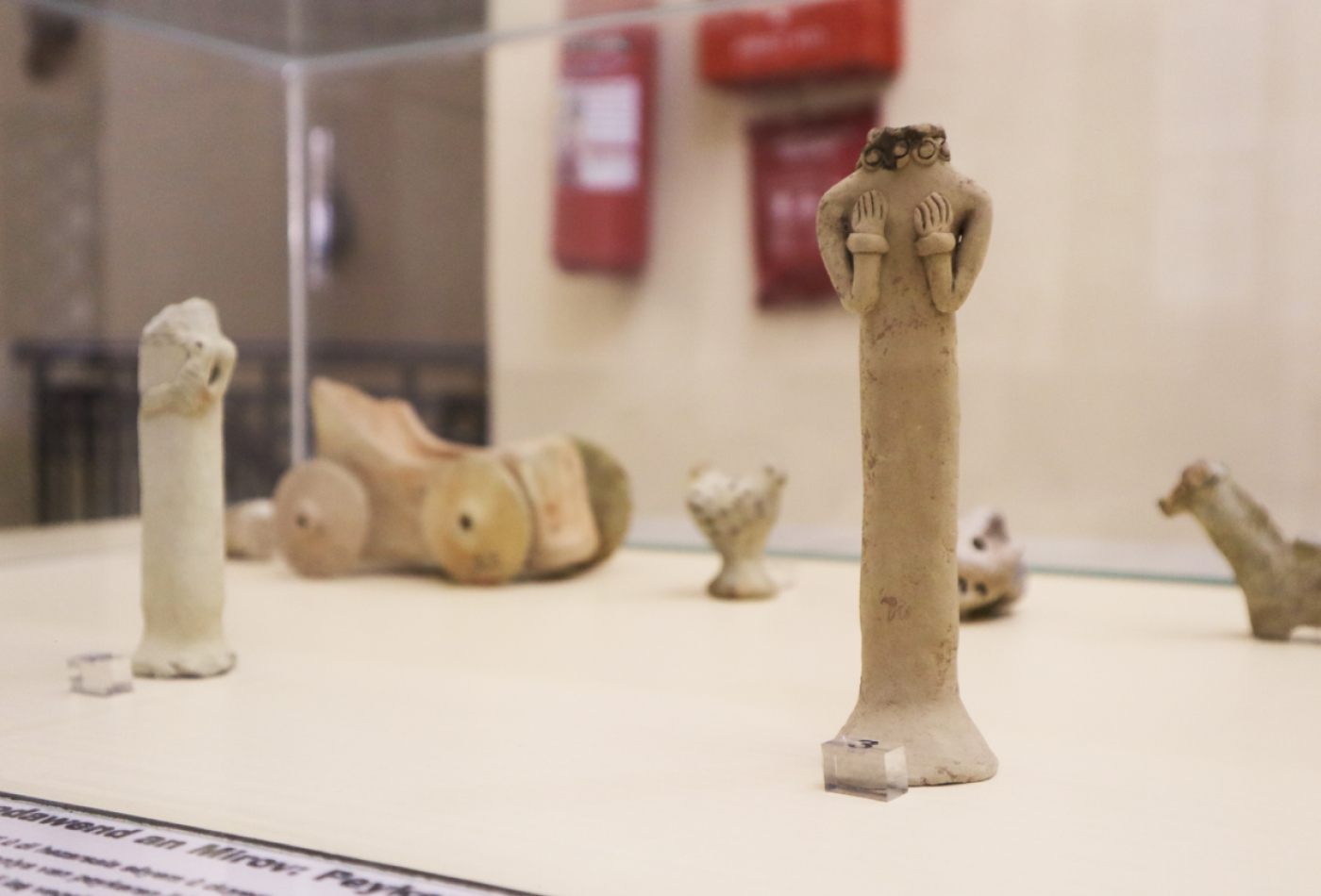


Deities or Humans: Terracotta Figurines
About the exhibition
In the ancient eastern settlements of the third and second millennium BC, large quantities of figurines with human-like appearances have been found.
Most of them are roughly crafted, featuring elongated, upright, rectangular "bodies" that widen at the base to provide stability. Unfortunately, many of their heads have been broken off and are found separately. Their faces tend to be quite peculiar, often displaying bird-like features and sometimes rather large eyes. Jewellery is frequently referenced with the figurines adorning simple necklaces or earrings made by cutting circles out of the clay or by incisions. Some wear headdresses that resemble turbans, while others display more intricate hairstyles.
A large part of the collection seems to represent 'mothers,' featuring female figurines cradling children in their arms. Others are portrayed with their arms raised to their chests, sometimes with hands covering or supporting their breasts. These figures also wear jewellery but don’t seem to have long hair.
Some of these figurines resemble a larger collection of stone statues that were found in ancient eastern temples from the 3rd millennium. Inscriptions on some of theses statues indicate they were offered by pious men and women to represent themselves in eternal worship before the statue of the respective god. Many of the worshippers have strikingly large eyes made of alabaster, shell, bitumen and even lapis-lazuli for the pupils.
Another notable group of terracotta figurines depicts naked women with clearly defined breasts and pubic areas. They are commonly associated with Ishtar, the ancient eastern goddess of love and fertility, possibly symbolising the donor's desire for children or other forms of fertility.
It is unclear whether all of these figurines served the same purpose; they may have been offerings for gods and goddesses, like their much larger and more expensive stone relatives. Alternatively, they might have simply been ancient dolls.




